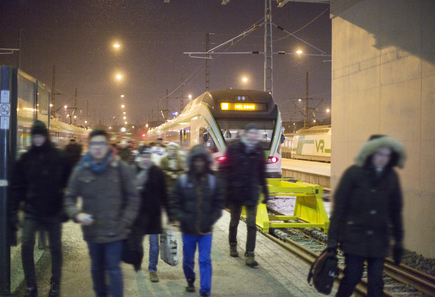
HSL studied perceived safety on commuter trains 8-21 January 2018. The survey studied the passengers’ sense of safety during the journey they were making when they received the survey invitation, as well as perceived safety on commuter trains during the past year. The survey did not address traffic safety.
A total of 89% of the respondents also felt safe at stops and stations. Unpleasant experiences are more common than actually dangerous situations. During the past year, 51% of passengers had experienced a situation perceived as threatening, while 10% of passengers had experienced a situation perceived as dangerous. Perceptions of safety have remained relatively unchanged from 2016. Passengers may feel unsafe during their journeys even though nothing actually happens.
Staff presence makes passengers feel safe
Staff plays a major role in improving the passengers’s sense of safety. According to passengers, uncertainty is caused, for example, by not knowing if there is a conductor on the train or not. In addition, the role of conductors is not clear. According to the survey, passengers are not aware that since June 2017, there is a pair of conductors on all commuter trains from 8pm-10pm. At other times, conductors move from one commuter train to another. Conductors have the right to remove passengers traveling without a ticket, but they cannot issue penalty fares. In certain circumstances, conductors can be replaced by guards.
HSL and VR will revise the agreed operating model determining the role of conductors based on feedback from passengers.
About seven per cent of respondents said they avoid traveling by commuter trains for safety reasons, compared to eight per cent in 2016. Those who avoid using commuter train services gave significantly poorer ratings to safety than other respondents. The most common reasons for avoiding commuter trains were train stations, drunk passengers, possibility of using other modes of transport and uncertainty about the availability of staff.
Passengers felt the most unsafe and uncomfortable when traveling in the evening or at weekend nights. These are also the times when poeole most avoid commuter trains, although there are conductors on all commuter trains in the evening and at night. Women are more afraid of traveling on commuter trains than men. Women deemed train stations particularly unsafe. Passengers want better lighting and better security at stations.
Passengers were invited to respond to the survey by distributing survey invitations including a QR code and link to the survey on commuter trains on different days of the week and at different times of day over two weeks. A total of over 6,000 commuter train passengers responded to the survey.